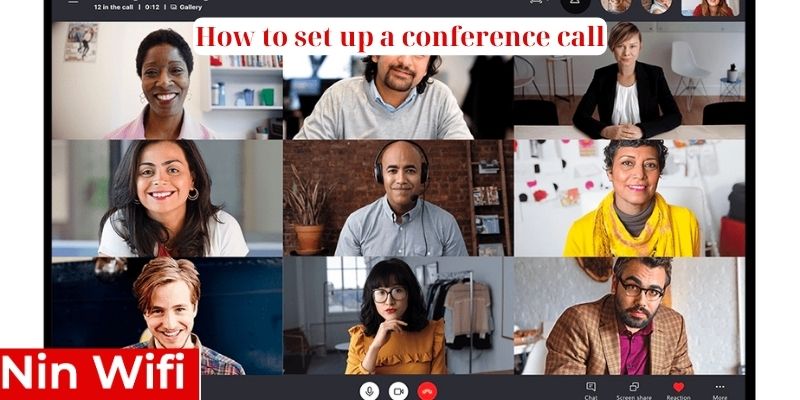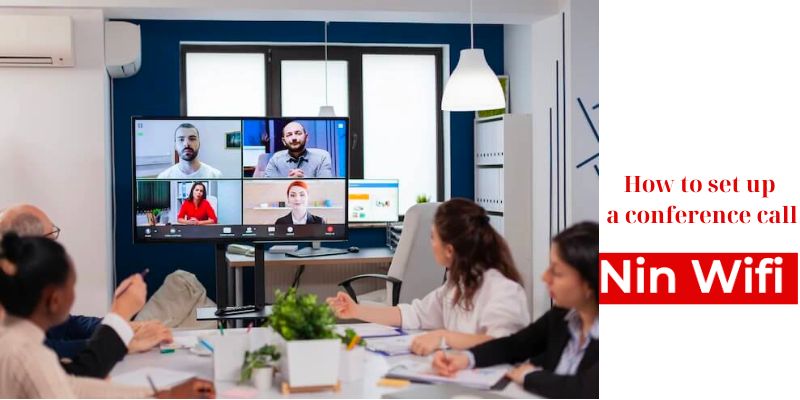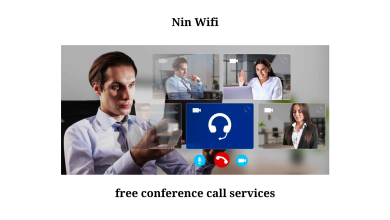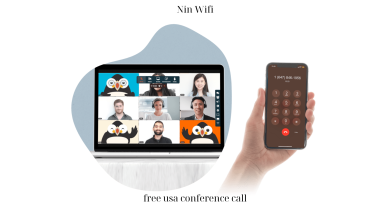How to set up a conference call? A Step-by-Step Guide
In today’s fast-paced business environment, effective communication is crucial for success. Conference calls have become an integral part of modern workplace communication, enabling teams to collaborate and connect regardless of geographical barriers. Whether you’re coordinating with remote team members, conducting client meetings, or organizing group discussions, knowing how to set up a conference call is a valuable skill. Ninwifi.com will walk you through the step-by-step process of How to set up a conference call, from preparation to troubleshooting common issues, empowering you to facilitate productive and efficient virtual meetings.
Preparing for the Conference Call:

Before diving into the logistics of setting up a conference call, it’s essential to lay the groundwork for a successful meeting. Start by clarifying the purpose and agenda of the call. Define the objectives you aim to accomplish and outline the topics to be discussed during the meeting. Having a clear agenda not only keeps the conversation focused but also ensures that all participants are aligned on the meeting’s objectives.
Next, select a suitable date and time for the conference call. Consider the availability of key stakeholders and aim for a time that accommodates the majority of participants. Additionally, factor in different time zones if your participants are located in various regions. Once the date and time are finalized, send out invitations to the participants, providing details such as the meeting agenda, dial-in number, access code, and any pre-call materials they may need to review.
Choosing the Right Conference Call Service:
Selecting the appropriate conference call service is crucial for a seamless meeting experience. With numerous service providers available, it’s essential to evaluate your options and choose a provider that meets your specific needs. Consider factors such as call quality, reliability, security features, and pricing when making your decision.
Several popular conference call service providers offer a range of features to enhance your meeting experience. Platforms like Zoom, Microsoft Teams, and GoToMeeting provide robust solutions for hosting virtual meetings, offering features such as screen sharing, video conferencing, and recording capabilities. Additionally, specialized conference call services like UberConference and FreeConferenceCall.com offer free or affordable options with basic features for smaller meetings.
How to set up a conference call?

Once you’ve selected a conference call service, it’s time to set up the call. If you’re using a dedicated service provider, the process typically involves creating an account, logging in to the service, and scheduling a new conference call. During the scheduling process, you’ll have the opportunity to configure call settings, such as audio options (e.g., phone audio or computer audio) and participant permissions (e.g., muting participants upon entry).
After scheduling the call, generate the conference call invitation and distribute it to the participants. Include relevant details such as the date, time, dial-in number, access code, and any other instructions for joining the call. Consider sending a reminder email or calendar invitation closer to the meeting time to ensure that participants have all the necessary information.
Conducting the Conference Call:
On the day of the conference call, it’s essential to prepare the meeting space and equipment for a smooth meeting experience. Ensure that your audio and video equipment are functioning correctly, and test the connection to the conference call service beforehand. If you’re using a webcam, position it at eye level and ensure adequate lighting for clear visibility.
Start the call on time and welcome participants as they join. Briefly introduce the purpose of the meeting and review the agenda to set expectations for the discussion. Throughout the call, facilitate the conversation according to the predetermined agenda, encouraging participation from all attendees. Utilize built-in features of the conference call service, such as mute controls and screen sharing, to enhance the meeting experience and keep the discussion focused.
Troubleshooting Common Issues:

Despite careful preparation, technical issues may arise during a conference call. Common issues such as poor audio quality, dropped connections, or background noise can disrupt the meeting flow. It’s essential to be prepared to troubleshoot these issues quickly and effectively to minimize disruption.
If you encounter technical difficulties, remain calm and focused, and communicate transparently with participants about the situation. Check your internet connection and audio settings to ensure everything is configured correctly. Encourage participants to mute their microphones when not speaking to reduce background noise, and consider using a backup dial-in number or alternative communication method if necessary.
Wrapping Up the Conference Call:
As the conference call draws to a close, take a moment to summarize key takeaways and action items discussed during the meeting. Thank participants for their contributions and feedback, and remind them of any follow-up tasks or next steps. Encourage participants to reach out if they have any further questions or require additional clarification on the topics discussed.
Conclusion:
Mastering the art of setting up a conference call is essential for effective communication and collaboration in today’s digital workplace. By following the steps outlined in this guide, you can confidently navigate the process of setting up and conducting productive virtual meetings. Whether you’re connecting with remote team members, collaborating with clients, or hosting group discussions, knowing how to set up a conference call empowers you to facilitate meaningful and efficient conversations, driving success in your professional endeavors.

